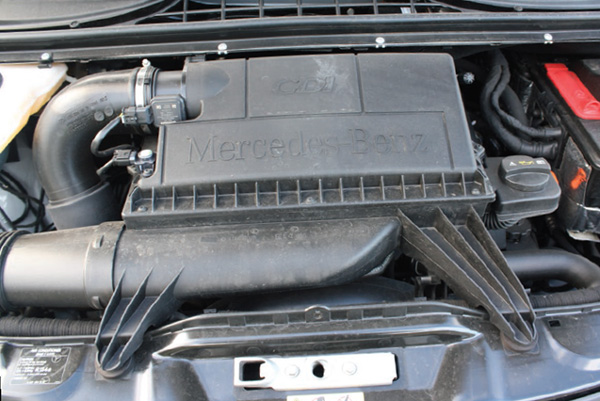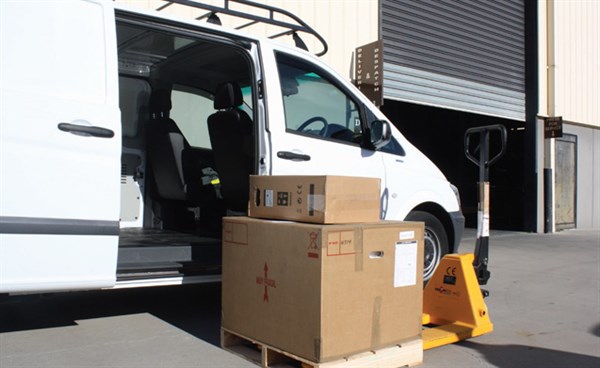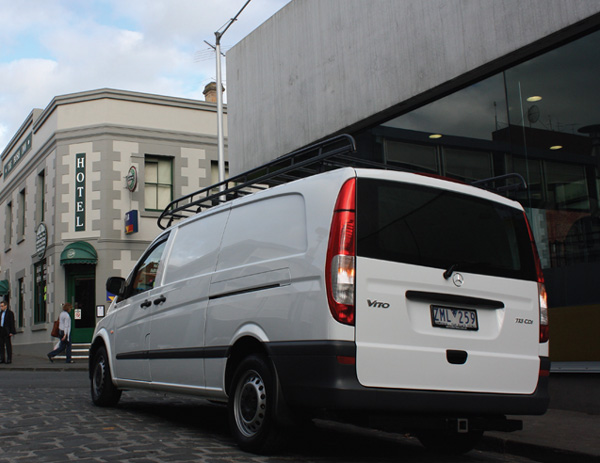Does the Mercedes-Benz Vito 113 CDI courier van deliver the goods? Matt Wood finds out in this video test.
It seems that every second Mercedes-Benz Vito on the road these days has been kitted out as a mobile coffee machine, a wheeled dispenser of lattes.
That is until recently when I spent a bit of time behind the wheel of the long wheelbase LWB Vito 113 CDI. I was actually quite disappointed to find that the Vito doesn’t come standard with an espresso machine.
Engine
The Mercedes-Benz Vito 113 CDI is propelled by a 2.1-litre 4 cylinder turbo diesel engine that puts out a respectable 100 killer watts and 310Nm of torque.
That being said, a step up the range will find the option of a 3-litre V6 diesel that puts out a livelier 165kW.
Transmission
The auto transmission felt hesitant at times when empty but the addition of a bit of weight in the cargo area seemed to keep the tranny in its happy place.
Most of the time, it performed quite nicely and it really was just a case of selecting ‘D’ and hitting the go pedal. As you’d expect from what is essentially an empty tin box on wheels, road noise did tend to thrum through the cab, but the addition of some cargo did quieten things down.

Cab and Controls
The Mercedes-Benz Vito 113’s cockpit comes across more as a place of work rather than one of leisure and borders on being a bit Spartan inside.
Climate control is a nice touch and the CD/radio combo did the job without setting the world on fire in regards to sound quality.
As you’d expect, Bluetooth and multimedia connectivity is available, though not on the base model 110.
I do have to give points to Benz on the cup holder arrangement that will accommodate cups of all different shapes and sizes.
Just in case you did manage to hit something hard, the Vito rates five stars in the Australasian New Car Assessment Program (ANCAP).
To make sure that you don’t hit anything in the first place, the Vito comes with Adaptive ESP; a combination of antilock braking, brake force distribution and brake assistance to keep the van on the straight and narrow in an emergency manoeuvre.
The proportions of the LWB Vito are in fact quite deceptive; it’s bigger than it looks from the outside and it’s easy enough to slot into a shopping centre car park but this belies the cavernous cargo area of the 113 LWB.

Angle of attack Daimler has hit the nail on the head when it comes to cabin storage with just enough for most working people, but not too many hidey holes to lose things in.
Bottle storage in the door pockets are good and the lidded storage compartment on the dash stops distracting reflections in the windscreen.
I did find the Vito difficult to get comfortable in after a while. The seat padding was a bit firm for my delicate posterior and the angle of the brake and accelerator pedals seemed awkwardly steep after a few hours.
This resulted in me wanting to sit further away from the pedals and get the feet right but meant the tele adjustment of the steering wheel ran out of adjustment. I can’t say I’m a huge fan of the foot operated park brake either but after a few days I did get used to it.
For jumping in and out, Benz have the seat and entry height just right — more of a ‘slide into’ rather than a ‘climb up’ which only helps on the occupational health and safety front.

Performance
The Mercedes-Benz Vito 113 long wheelbase van sits at the utilitarian end of the Benz van range, and the demo I drove was no exception, even coming with a rather sturdy tradies’ roof rack on top.
Given that this Vito didn’t come with any caffeine in it, I figured that maybe I should find some of my own. So, first stop was a coffee machinery company in Dandenong South to pick up a new espresso machine for a local café.
While the Vito is available with barn doors at the rear, this example had a swing-up door so forklift loading through the back door wasn’t going to happen.
The 985mm wide sliding side doors are just the right width for a Euro skid, unfortunately a Euro pallet is significantly narrower that an 1,150mm x 1,150mm square Australian-sized pallet, so forking through the side door isn’t an option either.
Fortunately, the machine didn’t weigh that much in the end and we just handballed it off the skid into the van.
The rear-wheel drive configuration of the Benz really does make it a great handling vehicle out on the open road. While you can get a little more grunt with the 3-litre V6 diesel, with nothing but an espresso machine and my ego on board the base 2.1-litre 4 cylinder turbo diesel engine didn’t feel lacklustre on the road at all.
Now I had the coffee machine, I needed some coffee so I spent a day delivering freshly roasted coffee beans for local bean roaster Capra Coffee.
With the delightful Deb riding shotgun and a fragrant waft of coffee drifting through the cab, we took to the mean streets of Geelong and the Surf Coast to make the little Bennie do some work.
It’s probably fair to say that the load could have been measured in the tens of kilos rather than the hundreds and at no time did we even come close to the Vito’s maximum payload of 1,110kg, or even filling its 6.2 cubic-metre capacity.
However, the very nature of the sort of work that vans undertake means that they tend to cube out in many roles rather than max out on payload.
Funnily enough, one of the exceptions to this would actually be a mobile espresso machine, which when full of water, coffee and machine generally comes in at a tonne of payload.
Our coffee delivery run took in the urban bustle of the CBD and some open road running where the Benz got to stretch its legs.
The road-testing gods have been very angry of late and it seems that every time I set foot outside with intention of road testing and taking photos of a vehicle, the sky clouds over and a gale force wind whips up.
My day on the road delivering coffee was no different, but it did prove that the Vito is quite a stable and sure-footed van on the open road.
The low rounded profile of the Benz proved quite slippery in a side wind and resisted the urge to duck and weave with the gusts of wind and passing traffic.
At idle and low speeds there’s no avoiding the slightly agricultural chatter of the little diesel engine, but once up to speed and working that quickly fades into the background, and again, for a commercial vehicle, this combination of engine and hydraulic automatic transmission is a very happy marriage.
The whole drivetrain performs well enough without being too exuberant. Fuel economy wasn’t too shabby either with an average of 8.1 litres/100km in a mix round town and highway use.

Verdict
For someone hauling freight, the rear barn door option would be a must to enable forklift access to the rear and if big weights were a regular occurrence the 116 CDI with a higher output of 120kW or even the 3-litre V6 in the 122 CDI would have to be a very attractive option.
But for a typical day of handballing freight around town, the Mercedes-Benz Vito 133 works quite well though really in the spec I drove it in, the Vito 113 CDI is one for the tradies and service industries.
The rear-wheel drive set up means that the van handles great in roles where it is always partly loaded, the lift-up rear door doubles as a weather shelter when working out of the back. The long wheelbase also gives plenty of room for racking for mobile workshop roles. Dare I say it’s also the perfect platform for a mobile espresso machine.
Specifications
Make/Model: Mercedes-Benz 113 CDI LWB
Engine: 2.1-litre common-rail direct injection 4 cylinder turbo diesel
Power/Torque: 100kW @ 3,800rpm / 316Nm @ 3,800rpm
Transmission: 5-speed full automatic
Length: 5,238mm
Load volume: 6.2 cubic-metres
Payload: 1,100kg



